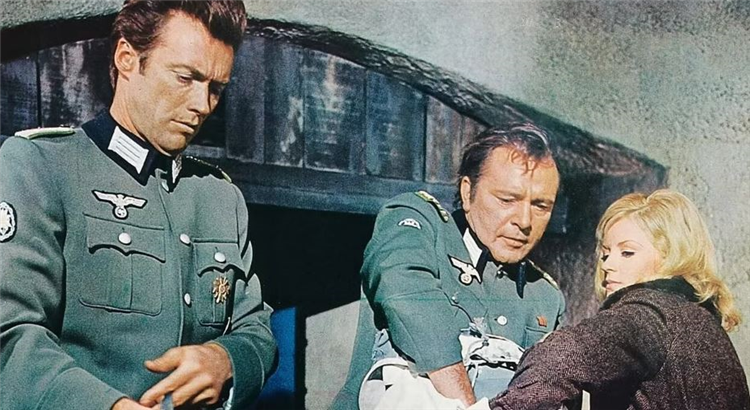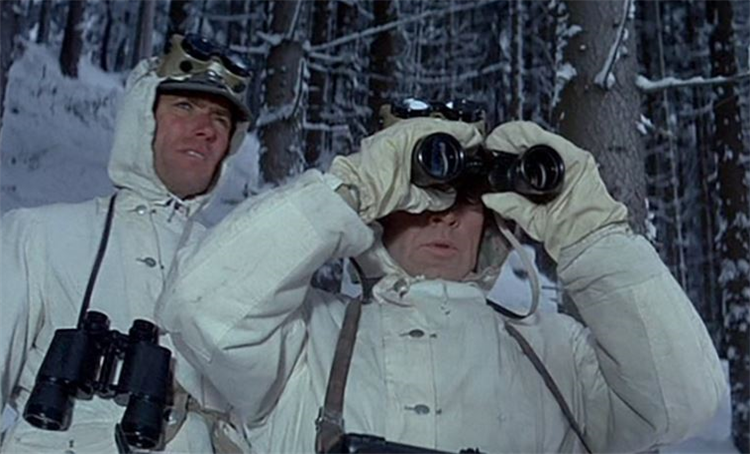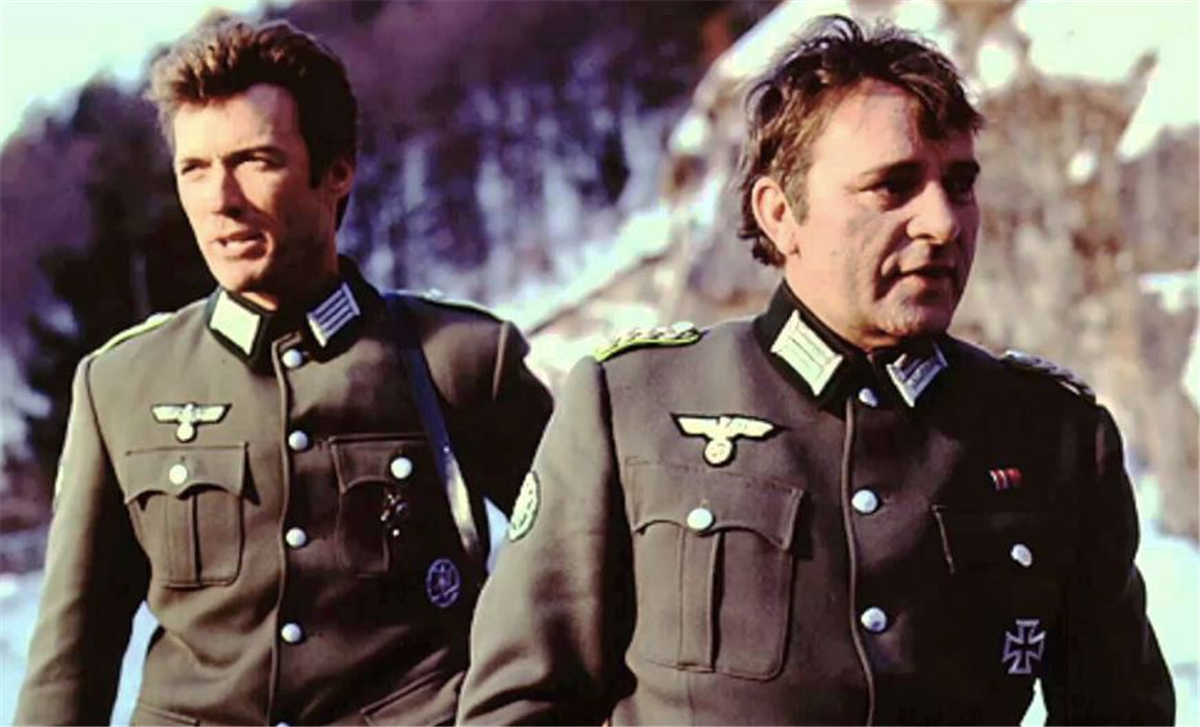The longevity of Clint Eastwood’s career defies logic. No one in their right mind would predict that a major movie star from the 1960s would keep working in the 2020s and remain culturally relevant. Yet, here we are, a nonagenarian Eastwood is set to release another directorial effort in the coming months: the legal thriller Juror No. 2. Looking back on the last 50 years of Eastwood’s career is a disservice to his filmography, as many of his finest films go back 60 years, notably the spiritual trilogy of spaghetti Westerns by Sergio Leone that began with A Fistful of Dollars in 1964. During the ’60s, before Eastwood emerged as a megastar in America thanks to his portrayal of Harry Callahan in Dirty Harry, the actor was prominent as steely, battle-tested soldiers in historical man-on-a-mission war epics. In the 1968 World War II adventure epic Where Eagles Dare, Eastwood, playing second fiddle to Richard Burton, perfected his familiar screen archetype.
‘Where Eagles Dare’ Is a Grand Epic Set Amid an Allied Conflict in World War II
Before taking his talents as a Western outlaw to the big screen in the United States, Eastwood made a pair of WWII movies, both directed by Brian G. Hutton. One was Kelly’s Heroes, a comedic caper with a deep ensemble cast featuring Donald Sutherland, Caroll O’Connor, and Don Rickles. Two years prior saw the release of Where Eagles Dare, a gritty and deadly-serious men-on-a-mission epic about British allied forces staging a dangerous raid on a Nazi base holding an American general prisoner. Leading this crack commando team to rescue the general, George Carnaby (Robert Beatty), is Major Jonathan Smith (Burton). On his team is the mute but menacing American Lieutenant Morris Schaffer (Eastwood), puzzled by his assignment on a British squad. This war-action epic gradually becomes a cunning espionage thriller, as Smith’s mission has a secret objective. Another spy, Mary Ellison (Mary Ure), is dropped into the mission without anyone’s knowledge besides Smith’s.

Where Eagles Dare’s astonishing craft is evocative of a time when movies felt larger than life. Even movies not categorized as epics were grand and impressive in their scope and spectacle. Thanks to the sweeping imagery created by Panavision cinematography, you can practically see the blood, sweat, and tears dripping off the mammoth production of the enemy castle, the immaculate costuming of the officer uniforms, and the immersive sound design of the bullets and explosives. The film is wholly austere without a lick of irony or winking. With other WWII-adjacent movies like The Great Escape and The Dirty Dozen, Hollywood reminded audiences that war and conflict overseas were once a noble cause. Released amid the Vietnam War as tensions flared on the domestic front, the dignified appearance of the military and their mission exists as a counter to the rampant anti-war protests in America at the time.
Clint Eastwood Plays Off of Richard Burton’s Star Power in ‘Where Eagles Dare’
Clint Eastwood plays an extension of the Man With No Name in the Sergio Leone “Dollars” Westerns. Lt. Schaffer is part of a squad, but he carries himself like a lone ranger, with his intense body language suggesting that he’ll start firing away at any moment. He lets the suave British Major Smith do the talking, as he can express all his menace through his iconic squinted eyes. The role as the stern, trigger-happy lieutenant is perhaps the closest he has come to portraying The Terminator. Being the lone American soldier, Schaffer carries himself like an outlaw all by his lonesome, which is familiar territory for Eastwood, to say the least. Fast-forward a handful of years later, it would’ve been unfeasible for Eastwood to play an underdog with his back against the wall. As a relatively young star, he captures a sense of distrust stemming from the tight-lipped confidentiality of this rescue mission. Schaffer knows something is sketchy about this scheme, and he is fully expected to be double-crossed.
Where Eagles Dare is a rare film in Eastwood’s filmography, as he is second billed behind Richard Burton, a more prominent star at the time. The plot and deliberate pacing of the film runs through Burton delivering exposition and negotiating with the opposition. The two stars were perfect foils for each other, with Burton as the loquacious, Shakespearean thespian who complements Eastwood’s naturalistic reticence. Burton’s dignified gravitas allows Eastwood to act as a raw and unfettered presence that he is usually deprived of as the dominant central figure in all his films. Whenever Eastwood worked off another actor of his pedigree, such as Meryl Streep in The Bridges of Madison County, his dramatic chops shined. With Burton, he uses his relative youth to underline the frustration of being restrained from blowing away every Nazi on the screen, as the wise and methodical Smith has something sneaky up his sleeve.
Clint Eastwood Shoots First and Asks Questions Later in ‘Where Eagles Dare’

Despite being sold as a wall-to-wall action epic set amid a treacherous military rescue, Where Eagles Dare is intensely plotted and methodically paced to the point of a slow burn. Throw in the spy element into the mix, and this convoluted plot only becomes more hazy, as we discover that Major Smith is a German spy, to then reveal that his German identity was only a ruse to infiltrate the Nazi command. Officers in the British squad are shown to be moles working against Allied forces, when the film reveals that General Carnaby’s capture (ostensibly the MacGuffin for the movie) was staged in order to penetrate the Nazi intelligence agency and identify the German moles. When this twist is disclosed, the rug is swept out from under the viewer, causing already-confused viewers to be checked out throughout the remaining runtime. The onslaught of twists and turns must have left an impact on Quentin Tarantino, whose own men-on-a-mission WWII epic, Inglourious Basterds, features a litany of double-crossing between Allied forces and Nazis. The underground bar stand-off in Basterds operates like a heightened version of every confrontation in Where Eagles Dare.
In a conversation with Derren Nesbit, who plays German officer Major Von Hapen, the actor shared that Eastwood requested that he be given fewer lines of dialogue. These lines were allocated to Richard Burton, which helped create the polarization between the smooth-talking Major Smith and the gun-blazing Lieutenant Schaffer. Clint Eastwood, who also truncated his dialogue in A Fistful of Dollars, shrewdly recognized his strengths at the outset of his movie star career. For the next 50 years, Eastwood developed a keen understanding of his screen persona. He was born to stand out from the pack of leading men who play courageous soldiers and expert gunfighters. While the majority of Where Eagles Dare consists of compelling but relentless exposition and combat strategy, Eastwood’s stillness draws the viewer’s eye, and his thirst for wiping out hostile forces simmers throughout the film. When Brian Hutton finally lets this war epic unleash, it is Eastwood’s Lt. Schaffer who delivers the carnage. As his co-star, Eli Wallach, said in The Good, The Bad, and The Ugly:when you have to shoot, shoot, don’t talk.
